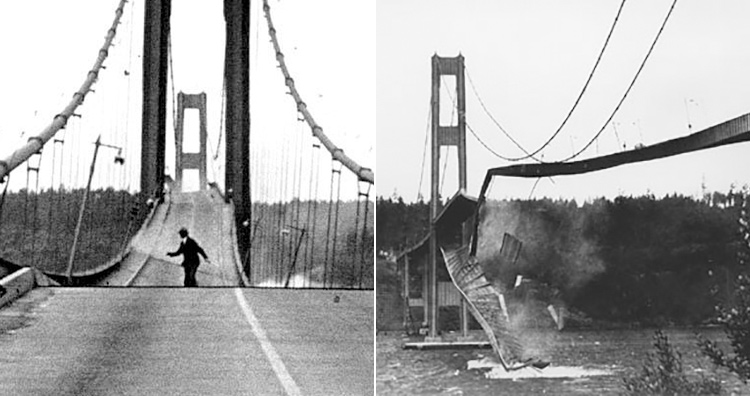The Tacoma Bridge collapse of 1940 in Washington, USA was a calamity of the world’s third longest suspension bridge back then and had a crucial impact on engineering. It caused the governing of the modeling of all the long-span bridges in the future.
Image credits: University of Washington Libraries Digital Collection’s photostream/Flickr , Botaurus-stellaris/Wikimedia
The Tacoma Narrows Bridge was an iconic, long-span bridge built in the state of Washington in the USA in the 1930s. It was opened to traffic on t July 1940. Leon Moisseiff planned the building’s design to be far more flexible than the acceptable standard ratios.
On 7 November 1940, strong winds of 40 mph battered the area and the bridge oscillated significantly. The bridge towers were made of strong, structural carbon steel, yet they proved no match for the violent movements which eventually caused the bridge to collapse. Fortunately, there were no fatalities except for a dog. The estimated loss from the mishap was $6.4 million.
(For more on other engineering disasters visit: https://mrbublenews.com/index.php/2018/04/14/the-14-worst-disasters-engineering-history/)
++++++++++









